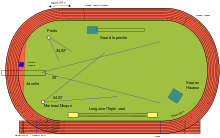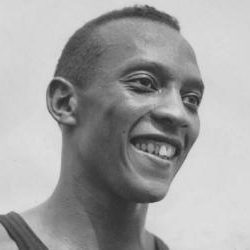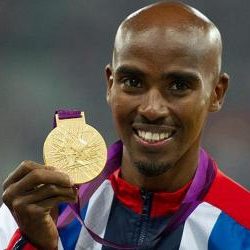Athletics is a term encompassing the human competitive sports and games requiring physical skill, and the systems of training that prepare athletes for competition performance. Athletic sports or contests are competitions which are primarily based on human physical competition, demanding the qualities of stamina, fitness, and skill. Athletic sports form the bulk of popular sporting activities, with other major forms including motorsports, precision sports, extreme sports, and animal sports.
Athletics
History
Athletic contests in running, walking, jumping and throwing are among the oldest of all sports and their roots are prehistoric. Athletics events were depicted in the Ancient Egyptian tombs in Saqqara, with illustrations of running at the Heb Sed festival and high jumping appearing in tombs from as early as of 2250 BC. The Tailteann Games were an ancient Celtic festival in Ireland, founded circa 1800 BC, and the thirty-day meeting included running and stone-throwing among its sporting events. The original and only event at the first Olympics in 776 BC was a stadium-length running event known as the station. This later expanded to include throwing and jumping events within the ancient pentathlon. Athletics competitions also took place at other Panhellenic Games, which were founded later around 500 BC.
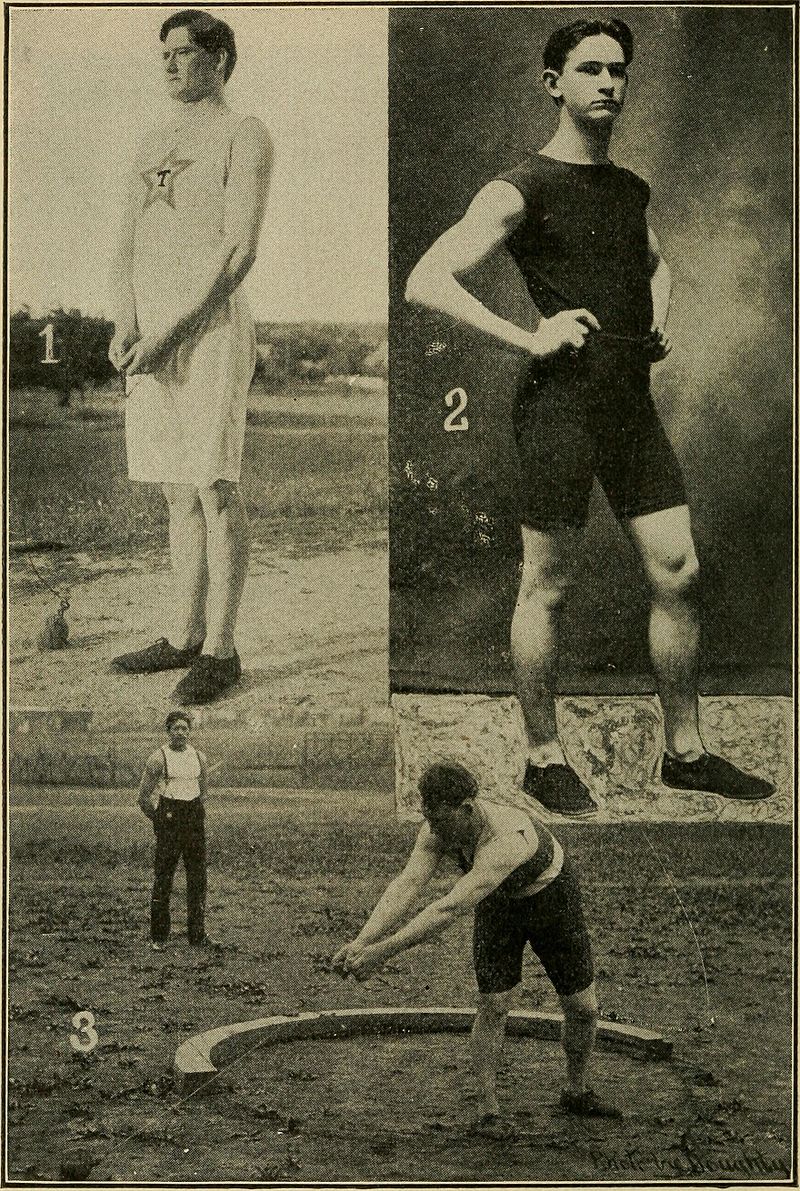
Venue
Track and field stadium
A standard outdoor track is in the shape of a stadium, 400 meters in length, and has at least eight lanes 1.22 m in width (small arenas might have six lanes). Older track facilities may have nonstandard track lengths, such as 440 yards (402.3 m; 1/4 mile) (common in the United States). Historically, tracks were covered by a dirt running surface. Modern All-weather running tracks are covered by a synthetic weather-resistant running surface, which typically consists of rubber (either black SBR or colored EPDM granules), bound by polyurethane or latex resins. Older tracks may be cinder-covered.
A standard indoor track is designed similarly to an outdoor track, but is only 200 meters in length and has between four and eight lanes, each with a width between 0.90 m and 1.10 m. Often, the bends of an indoor track will be banked to compensate for the small turning radius. However, because of space limitations, indoor tracks may have other nonstandard lengths, such as 160-yard (146.3 m) indoor track at Madison Square Garden used for the Millrose Games. Because of space limitations, meetings held at indoor facilities do not hold many athletics events typically contested outdoors.
Cross country courses
There is no standardised form of cross country course and each venue is significantly defined by the environment it contains – some may be relatively flat and featureless, while others may be more challenging with natural obstacles, tight turns, and undulating ground. While a small number of purpose-built courses exist, the vast majority of cross country running courses are created by cordoning a specific area within any open natural land, typically a park, woodland or greenspace near a settlement.
At the elite and professional level, courses must be looped and each lap must be between 1750 m and 2000 m in length. Severe obstacles such as deep ditches, high barriers and thick undergrowth not normally present; the course should be able to be completed whilst remaining on foot throughout. In order to maintain the sport’s distinction from road running, the usage of unnatural or macadamised surfaces is generally kept to a minimum or avoided entirely.
Because the majority of races take place on areas of grass, soil, mud or earth, weather conditions can significantly affect the difficulty of cross country courses, as snow and rain reduces traction and can create areas of standing water.
Road courses
A typical road running a course on the inner-city roads of Toronto
The surface of road races is highly important and the IAAF dictate that the courses must be along man-made roads, bicycle paths or footpaths. Courses set along major roads of cities are typical of road running events, and traffic is usually cordoned off from the area during the competition. While soft ground, such as grass, is generally avoided, races may start and finish on soft ground or within a track and field stadium. Road racing courses come in two primary types: looped and point-to-point. Courses may be measured and designed to cover a standardized distance, such as 10 km (6.2 mi), or they may simply follow a set route between two landmarks.
Road running courses over 5 km usually offer drinks or refreshment stations for runners at designated points alongside the course and medical professionals are present at the courses of major races due to the health risks involved with long-distance running.
Elite road walks are conducted on closed loop courses (usual loops of 2,000 or 2,500 meters). Refreshment stations are also present over long distance walking competitions, with drinks being available on every lap for races longer than 10 km.
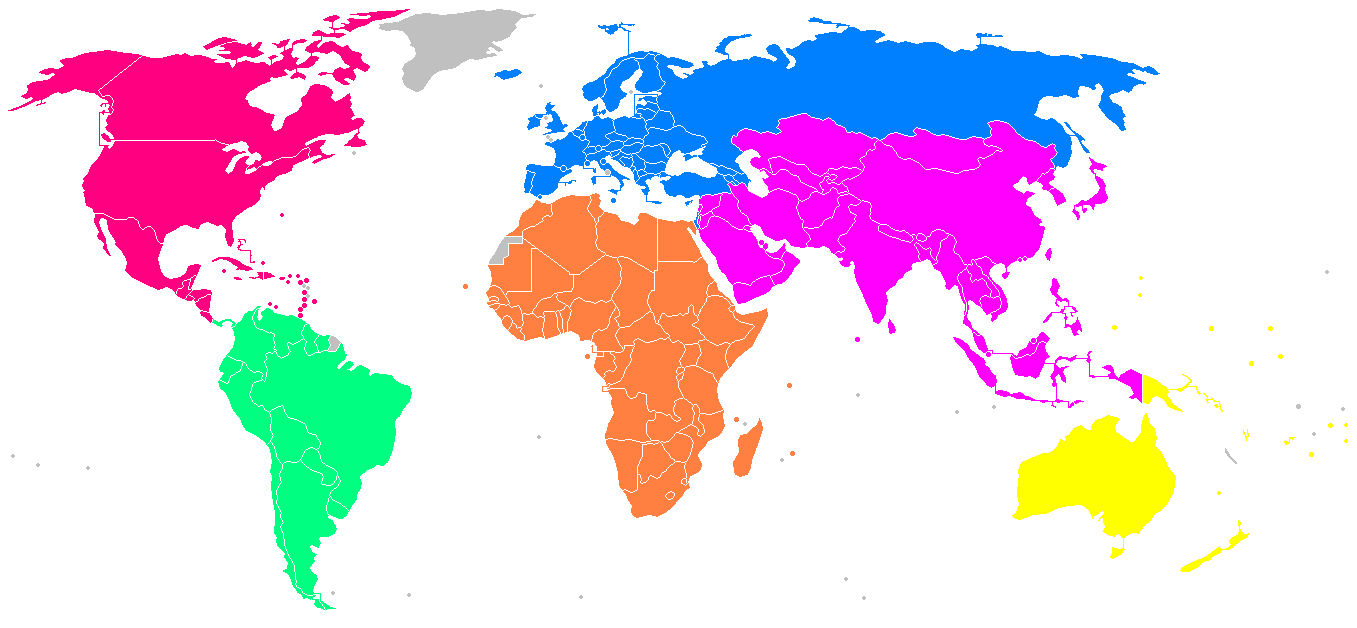
Organizations
Since its foundation in 1912, the international governing body for athletics has been the International Association of Athletics Federations (IAAF). It was initially known as the International Amateur Athletics Federation but changed later its name to reflect that the sport had moved away from amateurism towards professionalism in the late 1970s. The IAAF has 215 member nations and territories, which are divided into six continental areas (or area associations). The six association areas are for Asia, Africa, Europe, Oceania, North America, and South America. The sports within athletics do not have their own independent governing bodies at either international or continental level; instead, all fall under the athletics authorities.
Map of the six continental federations of the IAAF:
- AAA – Asian Athletics Association
- CAA – Confederation of African Athletics
- CONSUDATLE – South American Athletics Confederation
- NACACAA – North America, Central America and Caribbean Athletic Association
- EAA – European Athletics Association
- OAA – Oceania Athletics Association
National level athletics organisations are responsible for the regulation of the sport within their respective countries and most major competitions have some form of permit or approval from their national body.

